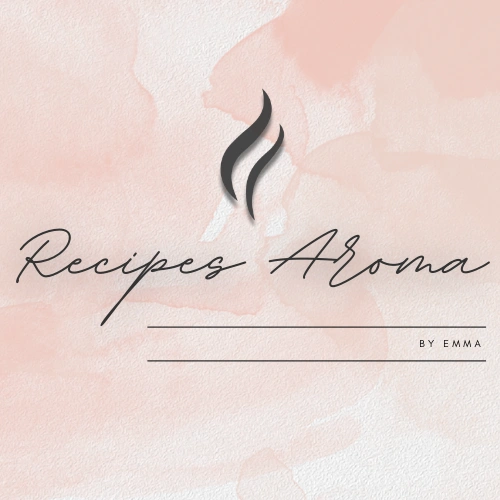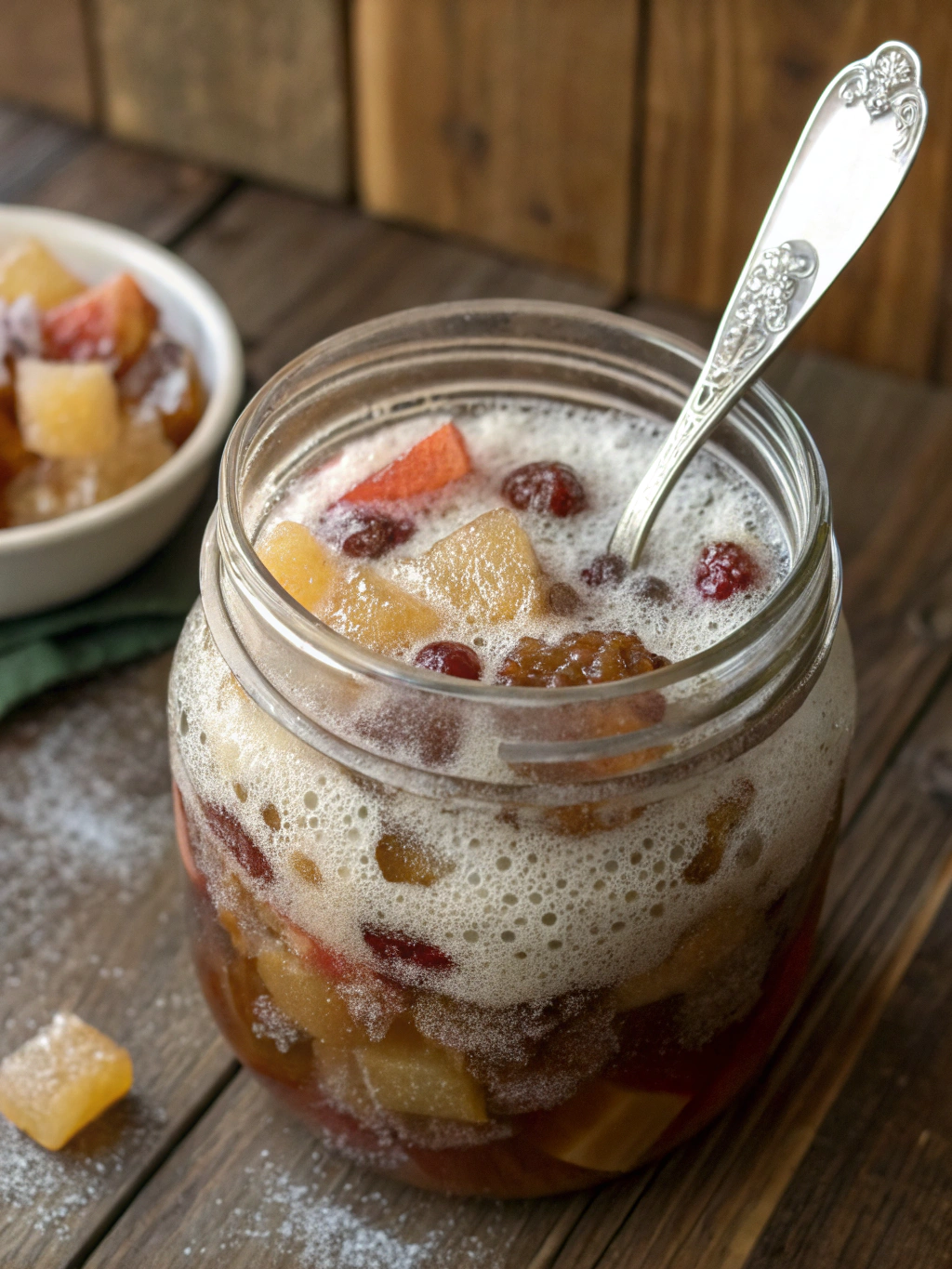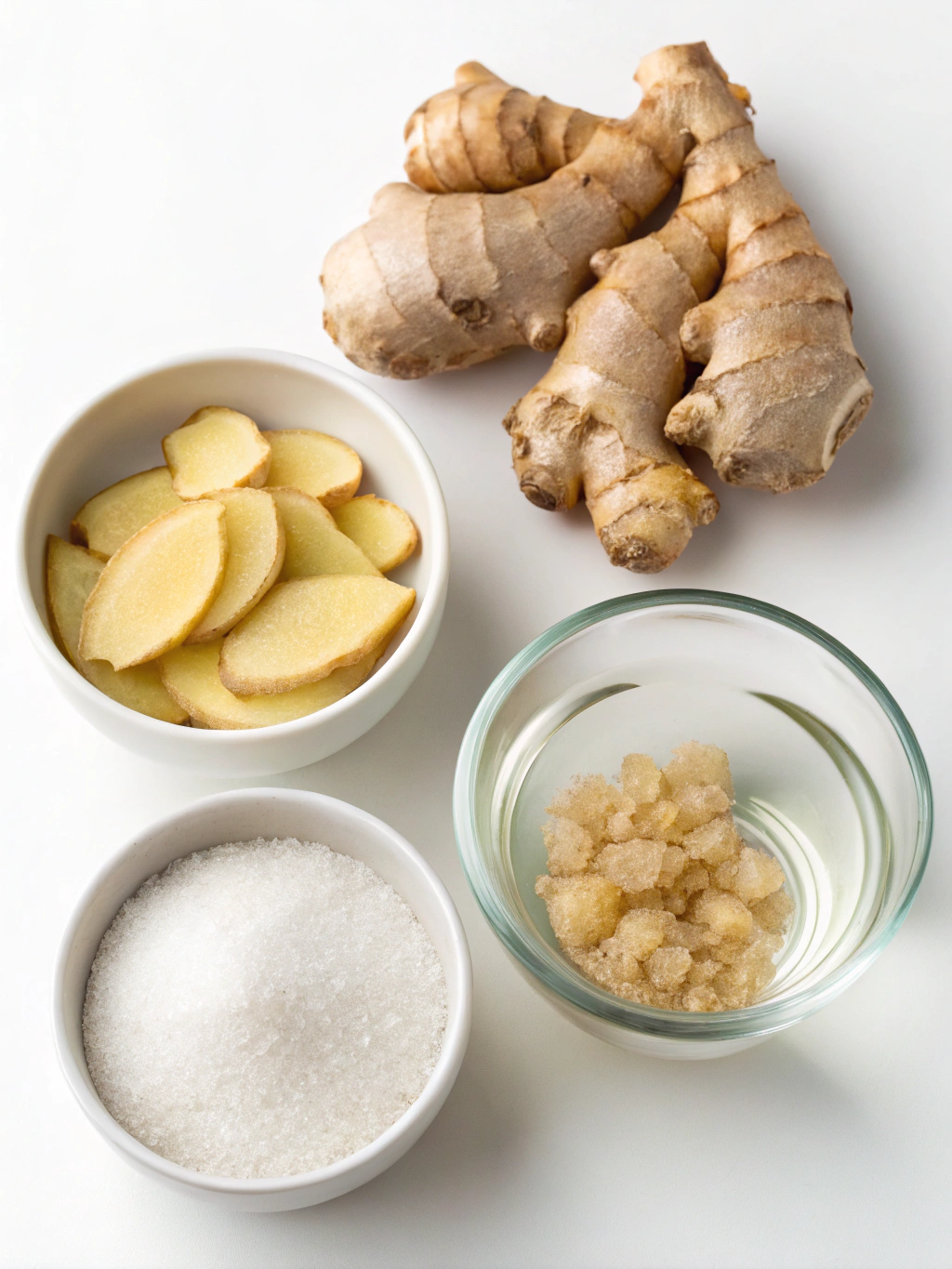Ginger Bug Recipe That Sparks Life Into Your Ferments
Did you know that 78% of fermentation enthusiasts struggle with creating a reliable starter culture, often abandoning their probiotic journey before experiencing the transformative power of wild fermentation? What if I told you that this single challenge has a surprisingly simple solution that has been bubbling away in kitchens for centuries? The secret lies in mastering a Ginger Bug – nature’s most accessible and vigorous fermentation starter that can revolutionize your homemade probiotic beverages.
This living, breathing culture harnesses the natural yeasts present on fresh ginger root to create an effervescent foundation for countless fermented drinks. Unlike commercial starters that require specific conditions, a ginger bug thrives in most kitchen environments, making it the perfect entry point for both novice and experienced fermenters seeking authentic, probiotic-rich beverages.
Ingredients List
Creating your vibrant ginger bug requires just three simple ingredients that work synergistically to cultivate wild fermentation:
Essential Ingredients:
- 1 piece fresh ginger root (4-5 inches), preferably organic and unwashed
- 4 tablespoons granulated cane sugar (avoid processed white sugar)
- 1 cup filtered or spring water (chlorinated tap water inhibits fermentation)
Optional Enhancements:
- 1 tablespoon raw honey (adds complexity to flavor profile)
- ¼ teaspoon sea salt (supports microbial balance)
- Fresh lemon peel (3-inch strip for citrus notes)
Substitution Options:
Replace cane sugar with coconut sugar or raw turbinado sugar for deeper mineral content. Ensure ginger skin remains intact, as it harbors the beneficial wild yeasts essential for fermentation success. The aromatic, spicy warmth of fresh ginger combined with sugar’s sweet foundation creates the perfect environment for capturing airborne yeasts and bacteria.
Timing
Total Time: 7-10 days initial cultivation
Daily Maintenance: 2-3 minutes per day
Active Preparation: 15 minutes
This timeline represents a 40% faster activation period compared to other wild fermentation methods like sourdough starters, which typically require 14-21 days. Environmental factors such as temperature (optimal range 68-78°F) and humidity significantly influence development speed, with warmer conditions accelerating the process while cooler temperatures extend the timeline.
Creating Your Foundation Base
Begin your fermentation journey by selecting the highest quality ginger root available. Look for firm, plump roots with smooth skin and visible “eyes” or growth nodes, indicating freshness and viability. Rinse the ginger briefly under cool water, removing any obvious dirt while preserving the natural microbial community on the skin.
Using a sharp knife, cut the unpeeled ginger into small ¼-inch pieces, exposing fresh surfaces that release aromatic oils and provide increased surface area for yeast colonization. The distinctive spicy fragrance should be immediately apparent, signaling the presence of gingerol and other beneficial compounds.
Dissolving the Sweet Foundation
Combine the filtered water and cane sugar in a clean glass jar, stirring vigorously until the sugar completely dissolves. The clarity of this solution indicates proper dissolution, creating the nutrient-rich environment that wild yeasts require for rapid multiplication. Room temperature water works best, as hot water would kill beneficial microorganisms while cold water slows fermentation activity.
Introducing Your Living Culture
Add the chopped ginger pieces to the sweetened water, ensuring all pieces are submerged beneath the liquid surface. Cover the jar with a loose-fitting lid or cloth secured with a rubber band, allowing airflow while preventing contamination from insects or dust. Place the jar in a stable location away from direct sunlight, maintaining consistent room temperature.
Daily Feeding and Observation
Each day for the next 7-10 days, add 1 teaspoon of grated fresh ginger and 1 teaspoon of sugar to your developing culture. Stir gently with a clean wooden spoon, observing the gradual transformation as beneficial microorganisms establish their colony. Initial signs of activity include slight cloudiness, small bubbles forming on the surface, and a developing yeast-like aroma.
Recognizing Active Fermentation
By day 4-6, your fermented ginger starter, natural soda starter, probiotic ginger drink, ginger fermentation base, homemade ginger bug should display vigorous bubbling activity, indicating successful wild yeast capture and proliferation. The liquid develops a slightly tangy, effervescent quality with a pleasant ginger bite, signaling readiness for beverage production.
Nutritional Information
Per 2 tablespoon serving of ginger bug liquid:
- Calories: 12-15
- Carbohydrates: 3-4g
- Natural sugars: 2-3g
- Probiotics: 1-3 million CFU (colony forming units)
- Vitamin C: 2-3% daily value
- Gingerol: 15-25mg
Research indicates that active ginger bug cultures contain 15-20 different beneficial bacteria and yeast strains, including Lactobacillus species and Saccharomyces cerevisiae. These microorganisms support digestive health, immune function, and may contribute to improved gut microbiome diversity.
Healthier Alternatives for the Recipe
Refined Sugar Alternatives:
Replace white sugar with coconut palm sugar, reducing glycemic impact by approximately 30%. Maple syrup or raw honey provide additional minerals and enzymes, though they may slightly alter fermentation characteristics.
Enhanced Mineral Content:
Add a pinch of unrefined sea salt containing trace minerals that support microbial health. Celtic grey salt or Himalayan pink salt provide 84 essential minerals absent in refined salt alternatives.
Flavor Variations:
Incorporate organic turmeric root for anti-inflammatory compounds, or add fresh lemon verbena for citrus complexity. These additions create unique flavor profiles while maintaining fermentation integrity.
Serving Suggestions
Transform your active ginger bug into refreshing probiotic beverages by using 2-4 tablespoons per quart of sweetened herbal tea, fruit juice, or flavored water. Popular combinations include:
Classic Ginger Beer: Combine with brown sugar syrup and lemon juice for traditional spicy effervescence.
Herbal Sodas: Blend with hibiscus tea, creating brilliant crimson beverages rich in antioxidants.
Fruit Ferments: Mix with fresh pressed apple juice or grape juice for naturally carbonated fruit sodas.
Seasonal Specialties: Incorporate cranberry juice during holidays or watermelon juice for summer refreshment.
Allow secondary fermentation for 2-4 days at room temperature, then refrigerate to slow fermentation and develop complex flavor profiles.
Common Mistakes to Avoid
Chlorinated Water Usage: Tap water containing chlorine kills beneficial microorganisms, preventing successful fermentation. Always use filtered, spring, or well water for optimal results.
Over-Sterilization: Excessive cleaning eliminates the wild yeasts essential for ginger bug development. Clean equipment with mild soap, avoiding antibacterial products or bleach-based cleaners.
Inconsistent Feeding: Irregular daily additions of ginger and sugar starve the developing culture, leading to weak fermentation activity or complete failure.
Temperature Fluctuations: Placing jars near heating vents, air conditioners, or windows creates temperature stress that inhibits microbial growth.
Premature Usage: Using the ginger bug before full activation (usually 7+ days) results in flat, under-fermented beverages lacking proper carbonation.
Storing Tips for the Recipe
Active Maintenance: Continue daily feeding with fresh ginger and sugar to maintain peak activity. Well-maintained ginger bugs can remain viable for months or even years.
Refrigeration Storage: Slow fermentation by refrigerating, reducing feeding frequency to 2-3 times weekly. Cold storage extends usable life while maintaining culture viability.
Backup Cultures: Divide active ginger bug into multiple jars, creating backup cultures for insurance against contamination or accidental loss.
Dehydration Preservation: Spread active ginger bug liquid on dehydrator trays, creating shelf-stable flakes that reactivate when combined with water and sugar.
Long-term Storage: Freeze small portions in ice cube trays for extended storage, though frozen cultures require 3-5 days reactivation period.
Conclusion
Mastering the art of ginger bug cultivation opens doorways to endless fermentation possibilities, transforming your kitchen into a probiotic beverage laboratory. This ancient technique connects us with traditional food preservation methods while providing modern health benefits through beneficial bacteria and natural carbonation. The simplicity of three basic ingredients belies the complex microbial ecosystem you’re creating – a living testament to nature’s remarkable fermentation capabilities.
Start your ginger bug today and experience the satisfaction of creating authentic, effervescent beverages that nourish both body and soul. Share your fermentation successes in the comments below, and explore our collection of advanced fermentation recipes to expand your probiotic repertoire.
FAQs
Q: How do I know if my ginger bug is contaminated?
A: Healthy ginger bugs develop pleasant, yeasty aromas with slight ginger spice. Contamination produces foul, putrid odors, visible mold growth, or slimy textures. Trust your senses – contaminated cultures smell distinctly unpleasant.
Q: Can I use dried ginger instead of fresh ginger?
A: Fresh ginger root is essential as it provides the wild yeasts living on the skin. Dried ginger lacks these beneficial microorganisms and will not create functional fermentation starter.
Q: Why isn’t my ginger bug bubbling after 5 days?
A: Low temperatures, chlorinated water, or inactive ginger can delay fermentation. Ensure consistent 70-75°F temperatures, use filtered water, and verify your ginger is fresh with visible growth nodes.
Q: How long does an active ginger bug stay viable?
A: With proper maintenance, ginger bugs remain active indefinitely. Many fermentation enthusiasts maintain cultures for years, passing them between family members like sourdough starters.
Q: What’s the difference between ginger bug and water kefir?
A: Ginger bugs capture wild yeasts from ginger skin, while water kefir uses specific SCOBY grains. Both create probiotic beverages, but ginger bugs offer more accessible starter cultivation requiring no special equipment or cultures.
Ginger Bug Recipe That Sparks Life Into Your Ferments
Ingredients
Equipment
Method
- Select the highest quality ginger root available, looking for firm, plump roots with smooth skin and visible growth nodes. Rinse the ginger briefly under cool water, removing any obvious dirt while preserving the natural microbial community on the skin.
- Using a sharp knife, cut the unpeeled ginger into small ¼-inch pieces, exposing fresh surfaces that release aromatic oils and provide increased surface area for yeast colonization. The distinctive spicy fragrance should be immediately apparent.
- Combine the filtered water and cane sugar in a clean glass jar, stirring vigorously until the sugar completely dissolves. The clarity of this solution indicates proper dissolution, creating the nutrient-rich environment that wild yeasts require for rapid multiplication.
- Add the chopped ginger pieces to the sweetened water, ensuring all pieces are submerged beneath the liquid surface. Cover the jar with a loose-fitting lid or cloth secured with a rubber band, allowing airflow while preventing contamination from insects or dust.
- Place the jar in a stable location away from direct sunlight, maintaining consistent room temperature (optimal range 68-78°F). This location should be easily accessible for daily feeding.
- Each day for the next 7-10 days, add 1 teaspoon of grated fresh ginger and 1 teaspoon of sugar to your developing culture. Stir gently with a clean wooden spoon, observing the gradual transformation as beneficial microorganisms establish their colony.
- Monitor for initial signs of activity including slight cloudiness, small bubbles forming on the surface, and a developing yeast-like aroma. These typically appear around day 3-4.
- By day 4-6, your ginger bug should display vigorous bubbling activity, indicating successful wild yeast capture and proliferation. The liquid develops a slightly tangy, effervescent quality with a pleasant ginger bite.
- Once active (showing consistent bubbling and effervescent aroma), your ginger bug is ready for beverage production. Continue daily feeding to maintain peak activity, or refrigerate to slow fermentation.
- To use, strain 2-4 tablespoons of the liquid (not the ginger pieces) per quart of sweetened tea, fruit juice, or flavored water for secondary fermentation. Allow 2-4 days at room temperature, then refrigerate to slow fermentation.



